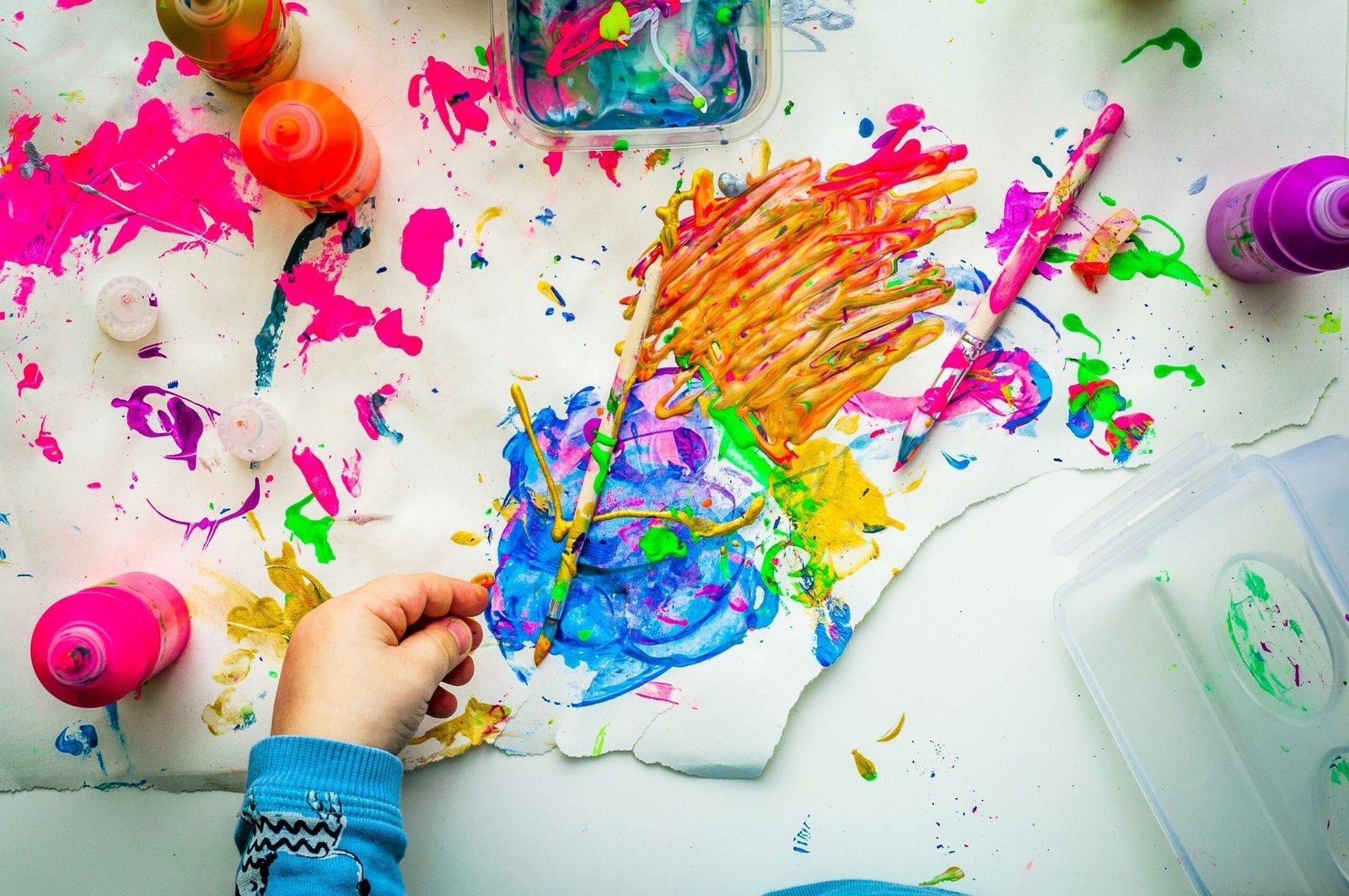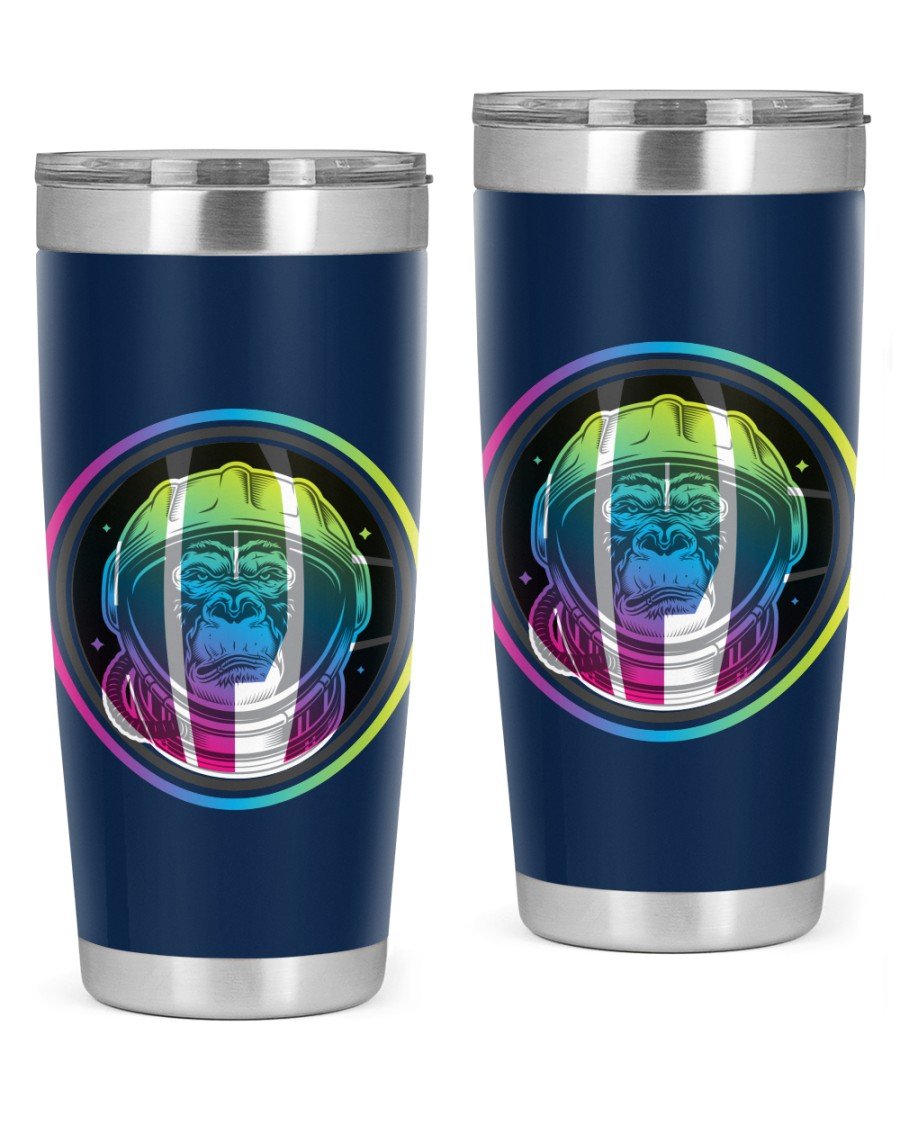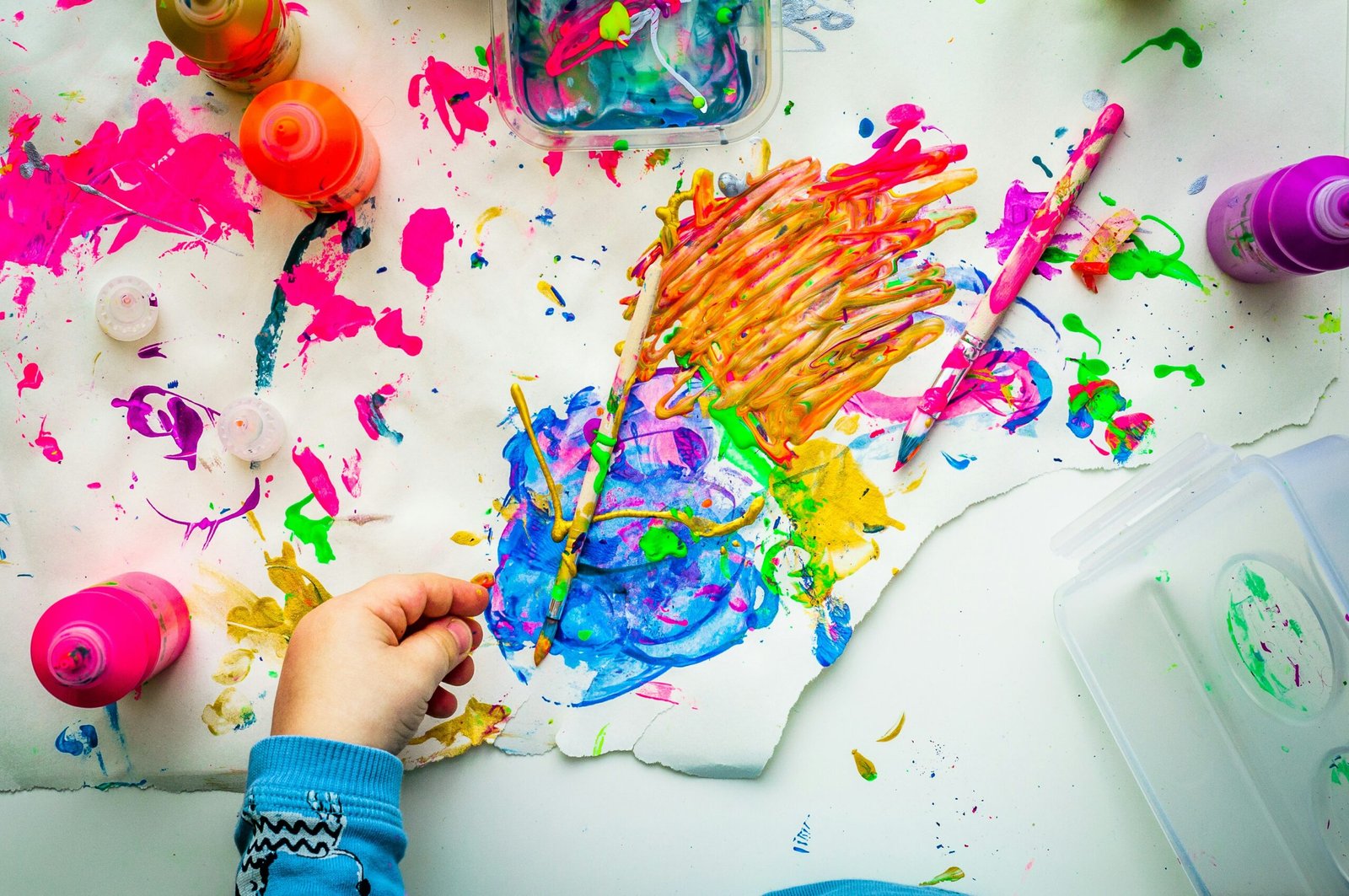
Introduction to Art and Well-Being
Art, in its multifaceted forms, serves as a profound conduit to our inner well-being. From visual arts like painting and sculpture to the auditory pleasures of music, the literary escapades of novels and poetry, and the dynamic expressions of performance art, each medium uniquely contributes to our mental health. Art is more than mere aesthetic pleasure; it is an essential element for emotional and psychological growth.
Engaging with art has been shown to foster emotional resilience and provide a sanctuary for self-expression. Whether one is creating or simply appreciating art, the act can lead to a reduction in stress and anxiety, fostering a sense of tranquility and mindfulness. Studies indicate that activities such as painting, writing, or listening to music can trigger the release of dopamine, a neurotransmitter associated with feelings of pleasure and reward. This biochemical reaction illustrates the intrinsic link between art and mental well-being.
The therapeutic value of art extends to structured practices like art therapy, where creating and reflecting on art helps individuals process emotions and experiences. This form of therapy has gained recognition for its efficacy in treating a myriad of mental health issues, from depression and PTSD to anxiety and grief. By facilitating a non-verbal outlet for expression, art therapy enables individuals to explore and articulate complex emotional landscapes.
Moreover, art fosters a sense of community and belonging. Whether through communal art projects, gallery exhibitions, or collaborative performances, engaging with art can bridge social gaps and create a shared sense of purpose and understanding. This communal aspect of art not only enriches individual well-being but also strengthens societal bonds.
This introduction sets the stage for a deeper exploration into how various forms of art contribute to our inner well-being and mental state. As we delve into specific aspects of art and its impact, it will become evident that art is not just a luxury but a vital component of holistic health.
The Psychological Benefits of Art Engagement
Engaging with art, whether through creation or observation, has significant psychological benefits that contribute to overall well-being. Numerous scientific studies and expert opinions have highlighted the profound impact of art on mental health. One of the most notable benefits is the reduction of stress levels. When individuals interact with art, their bodies experience a decrease in cortisol, the hormone responsible for stress. Lower cortisol levels lead to a state of relaxation, allowing the mind to unwind and rejuvenate.
Moreover, art engagement has been linked to increased levels of happiness. This is partly due to the release of dopamine, a neurotransmitter associated with pleasure and reward, which occurs when people create or appreciate art. The process of artistic expression allows individuals to channel their emotions constructively, resulting in a sense of accomplishment and joy. Additionally, experiencing art can evoke positive emotions, providing a temporary escape from daily worries and enhancing overall mood.
Another critical psychological benefit of art is its ability to improve emotional resilience. Engaging with art helps individuals process complex emotions and experiences, fostering a greater understanding of themselves and their feelings. This introspection and self-awareness contribute to emotional resilience, making it easier for individuals to cope with life’s challenges. Art therapy, in particular, has been shown to be effective in helping people manage anxiety, depression, and trauma by providing a safe space for expression and healing.
Expert opinions also emphasize the importance of incorporating art into daily life for mental well-being. Art activities, such as painting, drawing, or even visiting a museum, can serve as a form of mindfulness practice, encouraging individuals to focus on the present moment. This mindfulness aspect of art engagement promotes relaxation and mental clarity, further enhancing psychological health.
In conclusion, the psychological benefits of engaging with art are substantial. From reducing stress and increasing happiness to improving emotional resilience, art plays a vital role in enhancing our inner well-being and mental state. By integrating art into our lives, we can foster a healthier, more balanced mind.
Art as a Therapeutic Tool
Art therapy is an innovative approach in mental health treatment, leveraging the creative process to foster emotional well-being. Art therapy operates on the principle that the act of creating art can serve as a conduit for expressing thoughts, emotions, and experiences that might be difficult to articulate through words. This therapeutic practice has been instrumental in addressing a myriad of mental health issues, including anxiety, depression, and trauma.
The core principles of art therapy revolve around the belief that artistic expression can heal and transform. By engaging in the creative process, individuals can explore their feelings, reconcile emotional conflicts, and foster self-awareness. Art therapists guide clients through different artistic mediums—such as drawing, painting, and sculpting—tailoring the approach to meet each individual’s specific needs. This personalized methodology helps uncover deeper psychological insights, facilitating a path towards emotional healing.
Art therapy has been particularly effective in treating anxiety. The structured yet flexible nature of creative activities can provide a calming effect, reducing the intensity of anxious thoughts and promoting relaxation. Similarly, for those grappling with depression, art therapy offers a non-verbal avenue to express feelings of sadness or hopelessness, often leading to revelations that can be pivotal in the therapeutic process. The tactile and immersive nature of art-making helps ground individuals, fostering a sense of accomplishment and enhancing self-esteem.
Trauma survivors have also found solace in art therapy. Artistic expression can help them process traumatic memories in a safe and non-threatening environment. By externalizing their experiences through art, individuals can gain a sense of control and begin to reframe their narratives in a more empowering light. Case studies have shown that art therapy can significantly reduce symptoms of post-traumatic stress disorder (PTSD), aiding in the recovery process.
Numerous successful art therapy programs highlight its effectiveness. For instance, the Art Therapy Program at the Cleveland Clinic integrates creative practices into patient care, yielding positive outcomes in emotional resilience and overall mental health. Insights from art therapists, such as Dr. Cathy Malchiodi, emphasize that art therapy not only addresses symptoms but also nurtures the human spirit, promoting holistic healing.
Art’s Role in Building Emotional Intelligence
Engaging with art plays a pivotal role in the development of emotional intelligence, a critical component of overall well-being. Emotional intelligence encompasses the ability to understand, manage, and express one’s emotions, as well as the capacity to empathize with others. Art serves as a powerful catalyst in this developmental process.
Firstly, art encourages empathy by allowing individuals to step into the experiences and perspectives of others. When observing a painting, sculpture, or any form of visual art, viewers are often compelled to consider the emotions and thoughts of the artist. This reflective process fosters a deeper understanding of diverse emotional landscapes, thereby enhancing one’s ability to empathize. Literature and theater, too, immerse individuals in the lives and emotions of characters, promoting a richer empathetic experience.
Secondly, art enhances self-awareness by providing a mirror through which individuals can examine their own emotions. Creating art, whether through painting, writing, or music, offers a unique avenue for self-expression and introspection. This creative process allows individuals to explore and articulate their feelings, leading to heightened self-awareness. Moreover, the act of creating art can serve as a therapeutic exercise, helping people to process and make sense of complex emotions.
Furthermore, art facilitates emotional expression. For many, verbalizing feelings can be challenging. Art provides an alternative medium through which emotions can be communicated and understood. This non-verbal expression can be particularly beneficial for those who struggle with traditional forms of communication. By channeling emotions into creative outputs, individuals can achieve a sense of relief and clarity.
Lastly, interacting with art helps individuals manage their emotions more effectively. The process of engaging with or creating art can be both calming and invigorating. It offers a space for reflection and emotional release, which can significantly reduce stress and anxiety. By integrating art into their lives, people can develop healthier coping mechanisms and improve their emotional regulation skills.
Community and Social Benefits of Art
Engaging with art within a community context offers numerous social benefits, fostering connections and a profound sense of belonging among participants. Whether through local art groups, community projects, or collaborative workshops, art serves as a powerful medium for individuals to come together, share experiences, and form supportive networks.
Community art projects play a pivotal role in bringing people together, often bridging gaps between diverse groups. These projects can range from public murals, neighborhood art festivals, to collective installations. For instance, community murals often involve residents in both the planning and painting stages, allowing everyone to contribute their unique perspectives. This not only beautifies the environment but also instills a shared sense of pride and ownership among the participants, significantly reducing feelings of isolation.
Moreover, group art activities such as pottery classes, painting workshops, and theater productions provide social interaction opportunities that are essential for mental well-being. These activities encourage collaboration, communication, and mutual support, fostering an inclusive atmosphere where individuals feel valued and understood. The act of creating art in a communal setting can be particularly therapeutic, offering a safe space for expression and emotional release.
Examples of successful community art initiatives highlight their impact on social cohesion. The “Inside Out” project by French artist JR involves photographing community members and displaying their portraits in public spaces. This initiative has traveled globally, promoting inclusivity and dialogue among diverse communities. Another notable example is the “Mural Arts Philadelphia” program, which has transformed the city’s landscape and connected thousands of residents through collaborative mural-making processes. These projects not only enhance the aesthetic appeal of neighborhoods but also strengthen community bonds and foster a sense of collective well-being.
In essence, participating in art communities or group activities significantly enriches social connections and fosters a deep sense of belonging. By bringing people together, art reduces isolation, promotes collective well-being, and enhances the overall mental and emotional health of individuals involved.
Art and Cognitive Functioning
Engaging with art has far-reaching benefits that extend beyond mere aesthetic enjoyment. One of the most compelling advantages is its positive impact on cognitive functioning. Research has demonstrated that activities such as painting, drawing, and sculpting can significantly enhance problem-solving skills, critical thinking, and creativity. These activities stimulate the brain, fostering neural connections that are essential for cognitive development.
Studies have shown that art influences brain plasticity, the brain’s ability to reorganize itself by forming new neural connections throughout life. For instance, a study published in the journal Frontiers in Human Neuroscience found that individuals who engage in artistic activities exhibit increased gray matter in regions of the brain associated with fine motor skills and creativity. This indicates that art not only enhances cognitive abilities but also promotes brain health.
The cognitive benefits of art are not confined to any specific age group. For children, activities like drawing and coloring can improve fine motor skills, hand-eye coordination, and spatial awareness. These skills are foundational for academic success and overall cognitive development. According to the National Endowment for the Arts, students who participate in the arts are four times more likely to be recognized for academic achievement. This underscores the importance of integrating art into educational curricula.
For adults, engaging in artistic activities can serve as a mental workout, enhancing problem-solving abilities and fostering a more innovative mindset. Art encourages individuals to think outside the box and approach issues from multiple perspectives, which is invaluable in both personal and professional settings.
Older adults also benefit immensely from artistic engagement. Art activities can help maintain cognitive function and delay the onset of dementia and other age-related cognitive declines. A study in the Journal of Aging and Health revealed that older adults who engage in creative activities experience slower rates of cognitive decline compared to those who do not. Additionally, art provides a sense of accomplishment and purpose, which is crucial for emotional well-being in later life.
In conclusion, engaging with art offers substantial cognitive benefits across all age groups, enhancing brain plasticity, fostering creativity, and improving critical thinking and problem-solving skills. Whether young or old, incorporating art into daily life can lead to a more enriched, cognitively vibrant existence.
Personal Stories and Testimonials
In the realm of mental well-being, personal stories often serve as a powerful testament to the transformative power of art. One such story comes from Sarah, a former corporate executive who turned to painting to cope with severe anxiety. “I found solace in creating abstract art,” she shares. “The process of mixing colors and painting on canvas allowed me to express emotions I couldn’t articulate. It was therapeutic and significantly improved my mental state.”
Another compelling narrative is that of John, a military veteran dealing with post-traumatic stress disorder (PTSD). “Art therapy gave me a new lease on life,” John explains. “Sketching and drawing helped me process traumatic memories in a safe and controlled environment. It was like a bridge to healing.”
Art enthusiasts also find profound benefits. Emily, an art student, recounts her experiences: “Art has always been my sanctuary. Whenever I feel overwhelmed, I immerse myself in creating sculptures. Each piece I create reflects a part of my journey, and in doing so, I find clarity and peace.”
Not limited to personal endeavors, structured programs also showcase the positive impact of art on mental health. Dr. Laura, a psychiatrist, integrates art therapy in her practice. “I’ve observed remarkable improvements in patients who engage in art therapy,” she notes. “It allows them to explore and express their emotions creatively, often leading to breakthroughs in their treatment.”
These testimonials highlight the diverse ways in which art can enhance our inner well-being. Whether through painting, drawing, sculpting, or any other form of artistic expression, individuals across different walks of life find that art offers a unique and effective avenue for improving their mental health. By providing a human touch, these stories make the benefits of art more relatable, encouraging others to explore its potential for enhancing their own mental well-being.
Practical Tips for Incorporating Art into Daily Life
Incorporating art into daily routines can significantly enhance mental well-being. Simple activities such as drawing, painting, journaling, or attending art events can provide a welcome break from the stresses of everyday life. To begin with, consider setting aside a dedicated time each day for a creative activity. This could be as brief as 15 minutes of sketching in the morning or painting in the evening. Consistency is key to making art a habit.
For those interested in more structured guidance, local art classes offer an excellent opportunity to learn new skills and meet like-minded individuals. Many community centers, art studios, and educational institutions provide classes for various skill levels. If in-person classes are not feasible, numerous online resources and platforms offer virtual art lessons and tutorials. Websites like Skillshare, Udemy, and YouTube have extensive libraries of courses and videos that can cater to different interests and abilities.
Attending art events, such as gallery exhibitions, artist talks, or community art fairs, can also be a source of inspiration and relaxation. These events provide an opportunity to immerse oneself in a creative environment and appreciate the work of others. For those with busy schedules, integrating art into daily life can still be manageable. Consider carrying a small sketchbook or journal to jot down thoughts and ideas during breaks or while commuting.
Additionally, setting up a dedicated space for art at home can encourage regular creative practice. This space doesn’t need to be large; even a small corner with art supplies can serve as a personal sanctuary for artistic expression. The key is to make art accessible and enjoyable. By prioritizing and allocating time for art, individuals can experience its profound benefits on mental well-being.



